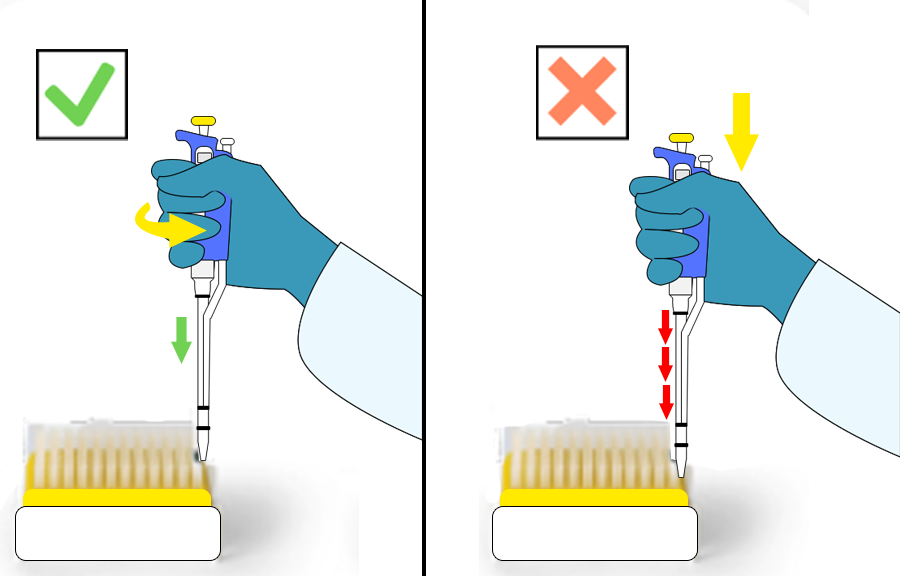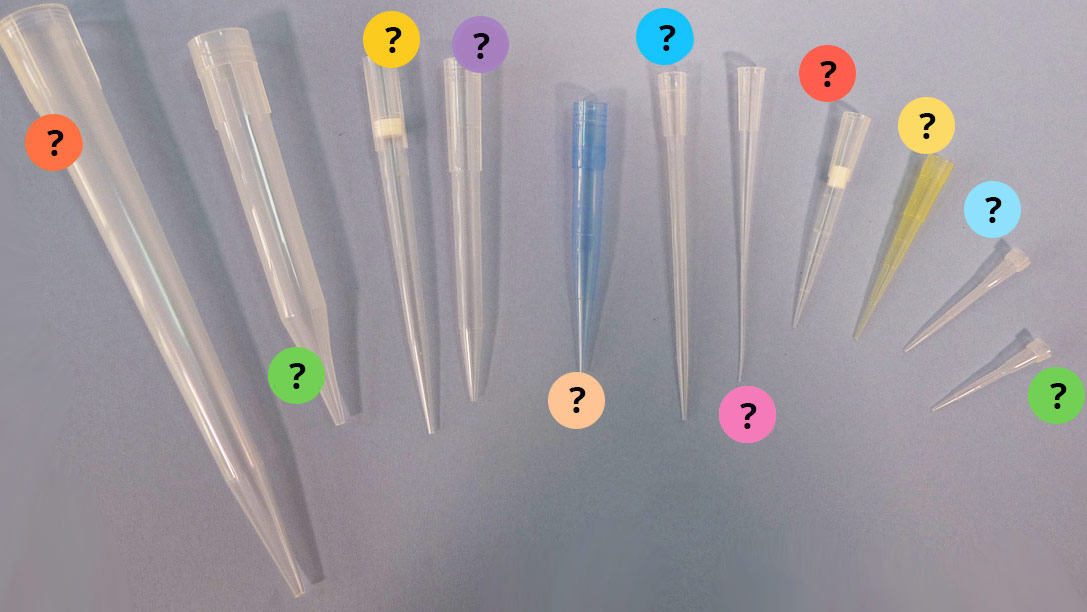Direct pipetting
How to choose your tip correctly
The first step is to insert the tip adapted to the chosen micropipette and to the sample to be taken.
There are many different types of tips: some come with a filter to prevent contamination or pipette damage when sampling a corrosive liquid; others are extended for sampling in long tubes, or have extra thin tips for depositing in electrophoresis gel wells; others are in treated special plastic to limit retention, and so on.
Tip for P10000
Tip for P5000
Tip for P1000, extended (1250 µL) filter tip
Tip for P1000, extended
Tip for P1000
Tip for P20-100-200, extended tip
Tip for P20-100-200, extra thin tip
Tip for P20-100-200, filter tip
Tip for P20-100-200
Tip for P10
Tip for P10
Shortened
Shortened
The tip should be loaded onto the micropipette without forcing it. A rotational movement is preferable, if necessary.

Never use the micropipette as a hammer!
Use a rotational movement instead for pushing
the tip into the cone.
Use a rotational movement instead for pushing
the tip into the cone.








